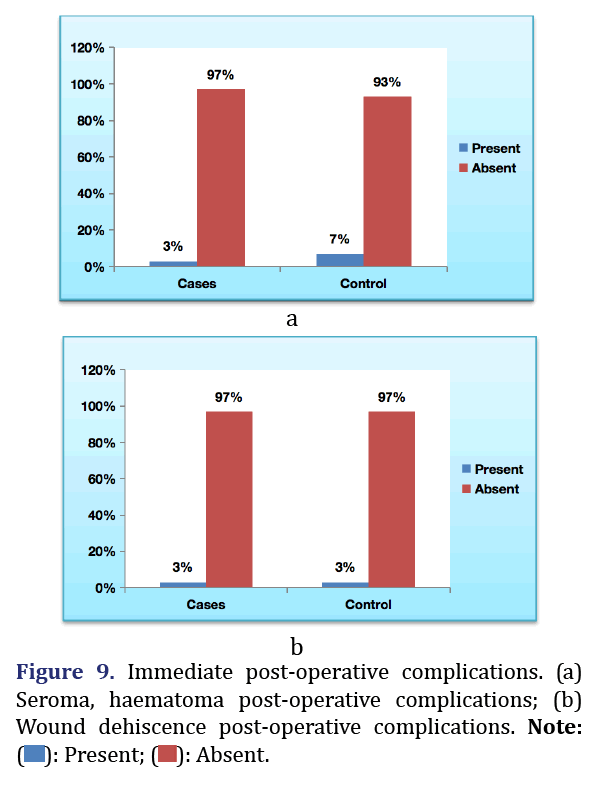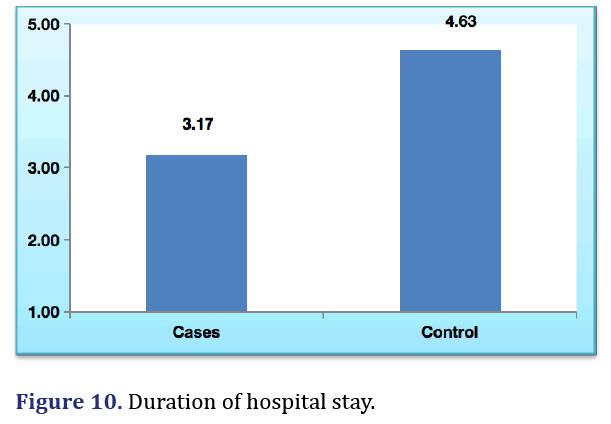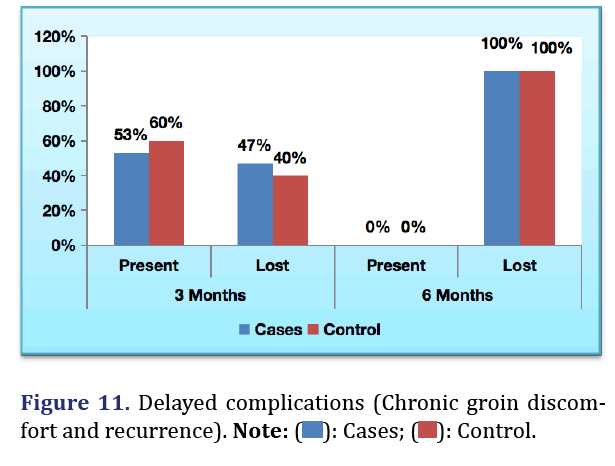Research Article - Archives of Clinical and Experimental Surgery (2023)
A Study of the Effectiveness of Fibrin Glue vs. Conventional Prolene Suture Fixation for Lichtenstein's Mesh Hernioplasty in Inguinal Hernia Repair
Kalpana Vineet, Sidduraj C Sajjan*, Aparajita Mukherjee and Bommareddy AkhilaSidduraj C Sajjan, Department of Surgery, Vydehi Institute of Medical Sciences and Research, Banglore, India, Email: dr.siddurajsajjan@gmail.com
Received: 01-Aug-2023, Manuscript No. EJMACES-23-108678; Editor assigned: 04-Aug-2023, Pre QC No. EJMACES-23-108678 (PQ); Reviewed: 18-Aug-2023, QC No. EJMACES-23-108678; Revised: 25-Aug-2023, Manuscript No. EJMACES-23-108678 (R); Published: 01-Sep-2023
Abstract
Introduction: Using conventional sutures for fixation of mesh in hernioplasty may lead to injury of muscle fibres or compress regional nerves leading to pain. Thus there is need to ascertain better and pain free mesh fixation technique. Aim of study is to assess advantages of fibrin glue over prolene suture in fixation of the mesh in open Hernioplasty. The main goal of the study is to compare fibrin glue and prolene sutures for its advantages and disadvantages.
Materials and methods: This prospective randomised comparative study was conducted in the Department of General Surgery at VIMS&RC, Bangalore. Duration of surgery, postoperative pain and use of analgesics, post-operative complications, duration of hospital stay were compared.
Results: 30 patients underwent mesh fixation using fibrin glue and 30 patients underwent suture fixation. Duration of surgery, mean postoperative pain score and use of analgesics were significantly lower in glue fixation group. Both groups of patients had lower incidence of postoperative complications.
Conclusion: Fibrin glue sealant is a better agent for mesh hernioplasty and its use should be encouraged in all patients of hernia repair over sutures, for the best postoperative surgical outcome. The only shortcoming of the glue is the higher cost when compared to sutures. So in situations wherein this higher cost can be overcome, glue is safe, easy and suitable alternative to prolene sutures as mesh fixation agent.
Keywords
Fibrin glue; Mesh; Hernioplasty; Sutures; Pain; Effectiveness
Introduction
Tension free mesh hernioplasty as demonstrated by Lichtenstein is a standard method for hernia surgeries [1]. Understanding the physiology and anatomy of the inguinal region and to know how to use most effectively the currently available surgical techniques and materials, holds the key to successful surgery. In hernia repair surgery, the use of mesh has reduced the recurrence rate by 50-75% [2]. Chronic pain or persistent neuralgia has been recognised as a complication after inguinal hernia repair. Estimates of chronic pain are found to be as high as 30% [3]. It can be mild to severe, can even be disabling and can adversely affect the quality of life. Chronic pain after hernia repair is highly influenced by method of mesh fixation. Ideal mesh fixation should be biocompatible and produce no structural damage. Sutures may injure muscle fibres, and compress regional nerves, leading to pain. This study is designed to ascertain the best technique for mesh fixation in hernioplasty to reduce the incidence of postoperative discomfort and neuralgia leading to chronic groin pain. In this study, fibrin glue and prolene sutures are used for mesh fixation in two groups of people and the results are analysed. The goal of this study is to assess the effectiveness of fibrin glue over suture fixation in reducing the postoperative complication. Though various similar studies had been done in recent years, fibrin glue is not used widely in need of larger studies supporting the results.
Aims and objectives
Aim of the study is to assess the advantages of fibrin glue over prolene suture in fixation of the mesh in open Hernioplasty with respect to
- Duration of Surgery.
- Assessment of post-operative pain and use of analgesics.
- Duration of hospital stay.
- To determine presence of chronic groin discomfort in follow up patients.
Materials and Methods
• This is a prospective randomised comparative study.
• Study was conducted during the period of November 2018 to February 2020 in the Department of General Surgery in a tertiary care Hospital. • A total of 60 patients were included in the study of which 30 patients each, were allotted into 2 groups (Case group-glue fixation, Control group-suture fixation).
Fixation using fibrin glue
The fibrin glue: Biodegradable adhesive, combining human derived fibrinogen and thrombin, imitates the last phase of physiological blood coagulation [4,5].
Fibrin degradation inhibited by anti-fibrinolytic Aprotinin acts as an antifibrinolytic to prevent premature degradation of clot (Figure 1).
Contents
Fibrin glue used here for mesh fixation is available as 2 component kit (Figures 2 and 3).
1 vial: Tisseel/fibrinogen powder (component 1, lyophilized human fibrinogen).
1 vial: Aprotinin/antifibrinolytic solution (solvent for component 1, synthetic aprotinin).
1 vial: Thrombin powder (component 2, lyophilized human thrombin).
1 vial: Calcium chloride solution (solvent for component 2, calcium chloride).
Preparation and reconstitution
Vials containing tisseel powder and aprotinin solution are preheated for approximately 3 minutes at temperature of 33-37°C in a waterbath. Using blue sealed syringe aprotinin solution is transferred to vial containing tisseel powder and returned to water bath for 1 minute and kept in water bath to maintain the temperature till it is being used. When required reconstituted sealer protein is withdrawn into blue scaled syringe and used under aseptic precautions. Contents of vial containing calcium chloride is transferred into thrombin vial using black scaled syringe. Swirl briefly to dissolve the contents. Then placed in water bath at temperature of 33-37°C until use. Contents after reconstitution should not be cooled or frozen.
Incompatibilities: Sealer protein and thrombin solution can be denatured following contact with solution containing alcohol, iodine or heavy metals.
Administration
Must be used within 4 hours of reconstitution. Warm to 33-37°C before use. Do not expose to temperature beyond 37°C. It can be applied by taking two components into two syringes and connecting it to a duploject and cannula device to dispense both the components at the same time or using spray device. After the placement of mesh, (as in all routine hernioplasty), instead of prolene suture, mesh is fixed with this fibrin glue by applying drops of glue all along the edge of mesh after attaining thorough hemostasis (Figures 4 and 5).
Results
The results of the study have been tabulated below in view of duration of surgery, post-operative Visual Analog Scale (VAS) score and analgesic requirement, immediate and delayed post-operative complications and duration of hospital stay with p value <0.001* depicting significant outcome (Figures 6-11 and Tables 1-6).
| Gluefixation (case) Mean±SD | Suturefixation (control) Mean±SD | p-value |
|---|---|---|
| 42.50±14.89 | 73.63±26.83 | <0.001* |
| Post-operative pain (measured by VAS) | Glue fixation Mean ± SD | Suture fixation Mean ± SD | p-value |
|---|---|---|---|
| 6 hours | 2.97 ± 1.38 | 6.23 ± 1.10 | <0.001* |
| 24 hours | 1.0 ±1.39 | 4.80 ± 1.54 | <0.001* |
| 48 hours | 0.30 ± 0.65 | 2.38 ± 1.30 | <0.001* |
| Post-operative analgesia | Glue fixation | Suture fixation | Total | p-value |
|---|---|---|---|---|
| 6 hours | 17 (57%) | 30 (100%) | 47 | <0.001* |
| 24 hours | 5 (7%) | 27 (90%) | 32 | <0.001* |
| 48 hours | - | 3 (10%) | 3 | - |
| Seroma/haematoma | Glue fixation | Suture fixation | Total | p-value |
|---|---|---|---|---|
| Present | 1 (3%) | 2 (7%) | 3 | 0.554 |
| Absent | 29 (97%) | 28 (93%) | 57 | |
| Total | 30 | 30 | 60 |
| Wound dehiscence | Glue fixation | Suture fixation | Total | p-value |
|---|---|---|---|---|
| Present | 1 (3%) | 1 (3%) | 2 | 1.000 |
| Absent | 29 (97%) | 29 (97%) | 58 | |
| Total | 30 | 30 | 60 |
| Glue fixation Mean ± SD | Suture fixation Mean ± SD | p-value | |
|---|---|---|---|
| Length of stay (in days) |
3.17 ± 1.12 | 4.63 ± 1.27 | <0.001* |
| Glue fixation | Suture fixation | Total (n=60) | p-value | |
|---|---|---|---|---|
| 4 Months follow-up | ||||
| Present for follow-up | 25 | 24 | 49 | 0. 17 |
| Chronic groin discomfort | 2 (8%) | 6 (24.9 %) | 7 |
Statistical methods
The Statistical analysis was performed by STATA 11.2 (College Station TX USA). Shapiro Wilk test has been used to check normality. Students Independent sample t-test was used to find the significant difference between duration of surgery, post-operative pain and length of stay. Chi-square tests were used to measure the association between the seroma, wound dehiscence and chronic Groin discomfort and it is expressed as frequency and percentage. p value of <0.05 is considered as statistically significant.
Discussion
When compared to patients who underwent conventional hernioplasty (mesh fixation using sutures), in patients who underwent mesh fixation using fibrin glue, the duration of surgery was significantly low. Lower postoperative Visual Analog pain severity Score and lower requirement of post-operative analgesics was also noted in glue fixation group. No significant differences were seen in view of hematoma/seroma and wound dehiscence between both the groups.
Long term follow-up could not be accurately done as patients in either groups were lost to follow-up after 4 months (due to pandemic conditions in the country). So definitive conclusion regarding prolonged groin discomfort and recurrence of hernia in either of the groups cannot be commented upon. Study could have had another result of better pain control in the glue fixation group, if larger sample size was taken and had all the patients been available for further follow up study [6-8].
Conclusion
As inguinal hernia is one of the commonly occurring clinical cases, the primary aim of surgery of inguinal hernia repair by open Lichtenstein’s procedure should aim at
• Tension free mesh repair
• Low post-operative pain score
• Decreased post-operative complications
• Shorter duration of hospital stay and rapid return to work
• Absence of prolonged groin complications with low/no recurrence rates
To achieve this goal of near perfect hernioplasty, fibrin glue mesh fixation is the best agent for better post-operative VAS score, very low or nil requirement of analgesics and lesser post-operative complications, thus requiring shorter hospital stay and earlier resumption of daily work and activity. Hence, more studies to substantiate the better results of glue fixation should be undertaken in larger study population to enhance the use of fibrin glue fixation over the conventional suture hernioplasty.
References
- Read RC. The development of inguinal herniorrhaphy. Surg Clin North Am 1984;64(2):185-196.
[Crossref] [Google Scholar] [Pubmed]
- JF Patino. A history of the treatment of hernia. In Hernia 4th edition, Philadelphia, Lippincott, 1995, 3-15.
- Lyons AA, Petrucelli RJ. Medicine: An illustrated History. New York, Harry S Abrams Inc. Publishers, 1987.
- Haeger K. The Illustrated history of surgery. London, Harold Starke, 1988, 9-279.
- Keynes, Geoffrey. The apologie and treatise: Containing the voyages made into divers places with many of his writings upon surgery. London, Falcon Educational Books, 1951.
- Lau WY. History of treatment of groin hernia. World J Surg 2002;26:748-759.
[Crossref] [Google Scholar] [Pubmed]
- Hesselbach FK. Neueste Anatomisch-Pathologische Untersuchungen wher den ursprung und das Fortscbreiten der Leisten und Schenkelbruche. Warzburg, Baumgartner, 1814.
- Cloquet J. Recherches anatomiques sur les hernies de l'abdomen. Thesis, Pads, 1817.








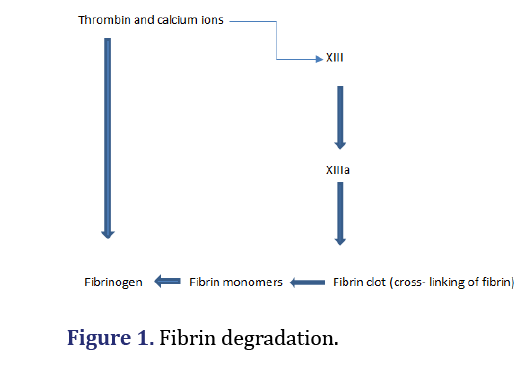
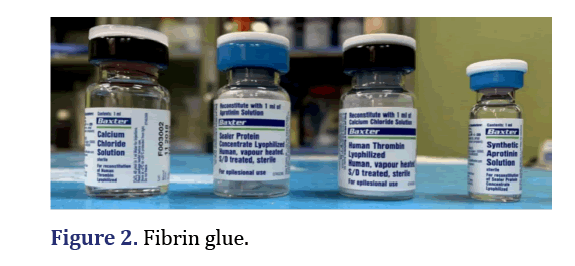
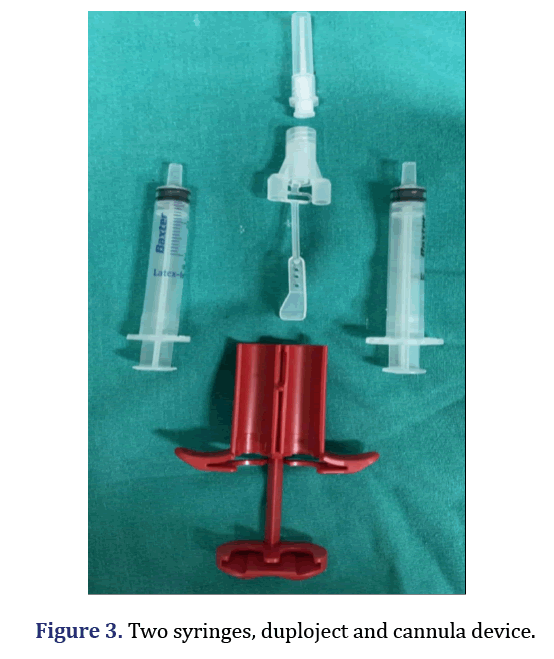
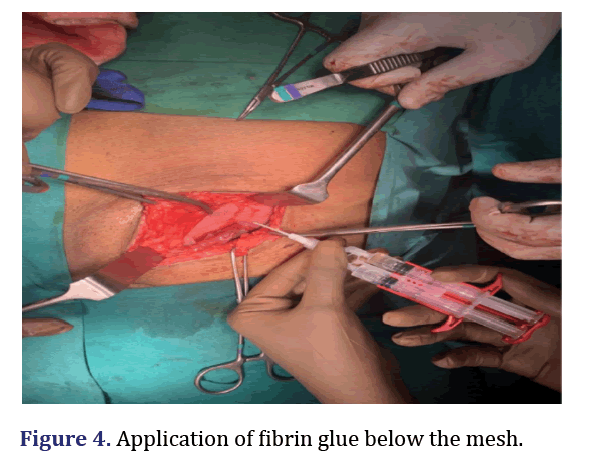
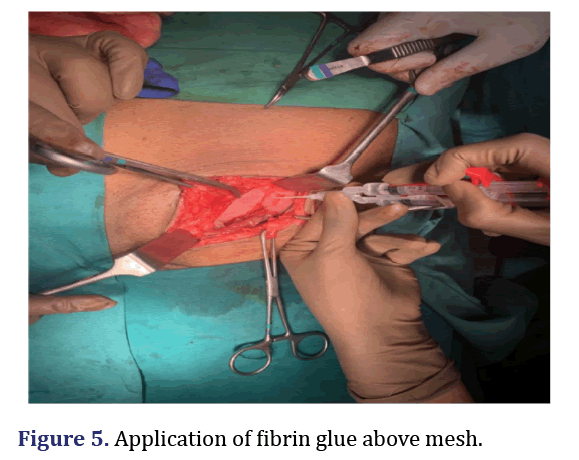
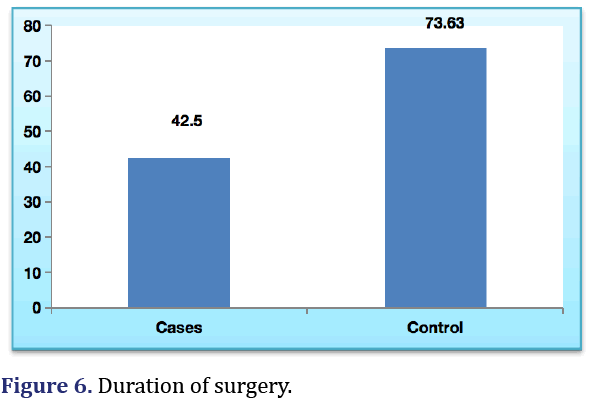
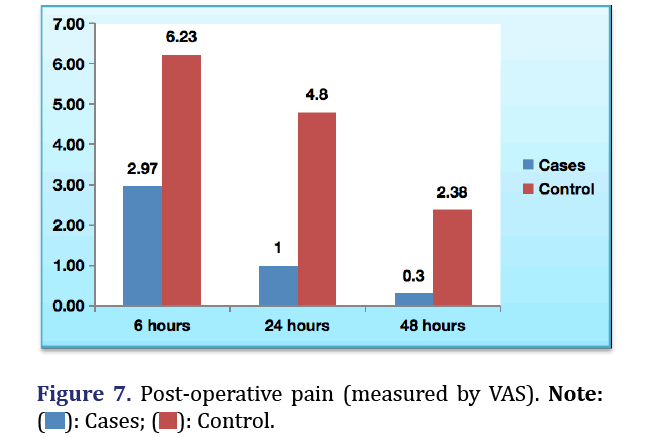

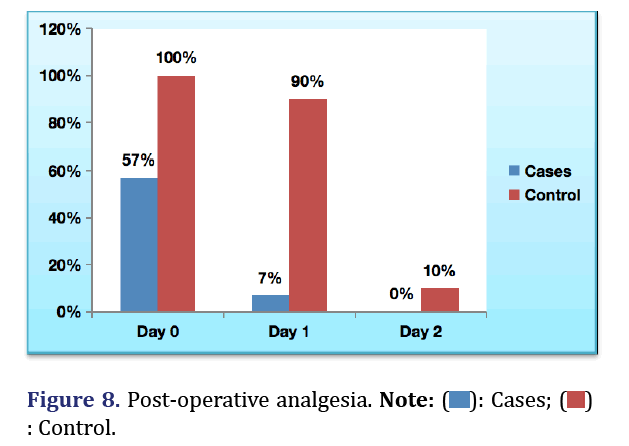
 Control.
Control.